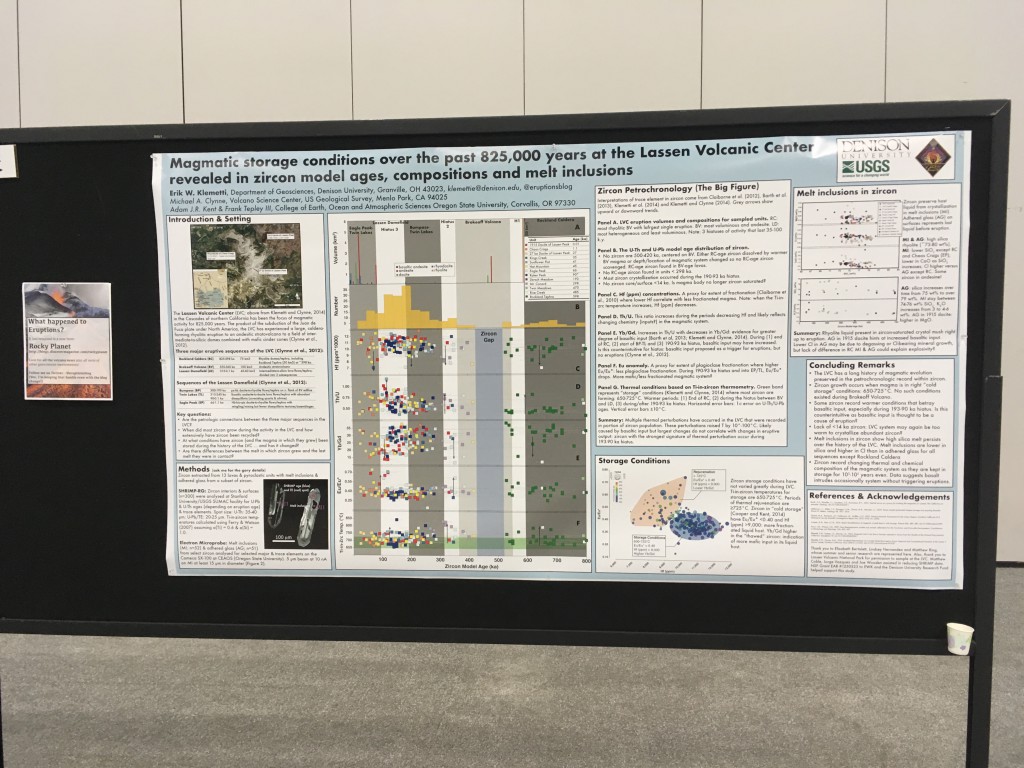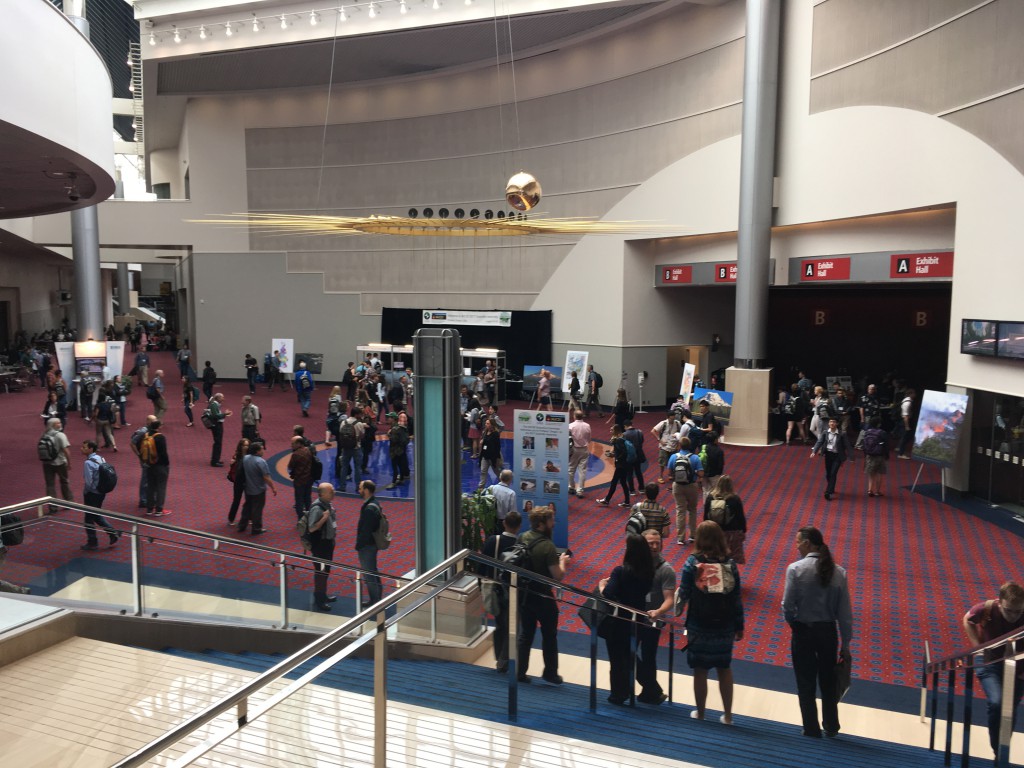Volcanologists at the IAVCEI meeting in Portland.
So, this whole week I’ll be taking part in the IAVCEI meeting in Portland, Oregon. Of course, most people have never heard of IAVCEI, which is an abbreviation of the International Association of Volcanology and the Chemistry of the Earth’s Interior (now you can see why we use the abbreviation.) This meeting is bringing together over 1,200 volcanologists and petrologists (who study magma, not petroleum) from all over world to talk about volcanoes.
We will even be visiting volcanoes during the meeting as almost everyone will be going to Mount St. Helens, Mt. Hood or the Columbia River Basalts during the meeting’s midweek field trip … because geologists love strapping on boots and heading out into the field.
So, why do we (scientists) have meetings like this? The answer isn’t as clear as you might think.
The good things:
- First and foremost, it is to interact with your colleagues and community. I’m a volcanologist in Ohio, so you can imagine I don’t run into many people in my field. In today’s world, that is less of an issue because I can reach most collaborators and colleagues easily over email, phone, social media. However, there is much to be said to one-on-one discussions in person to get things done quickly.
- We also go to get excited about the field. Most meetings are a mix of talks and posters by scientists about their research (you can see mine below). We can hear about the latest developments, many of which aren’t published yet. We can also present our own work to get others interested and (at least for me) to throw some ideas on the wall to see what the community thinks.
- Make new connections: Sure, you see your longtime friends and colleagues, but meetings are the place to meet on purpose (or by accident) new collaborators.
- Meetings also allow us geologists to see more of the world. Geology is a field where seeing the rocks is key — and the more you see, hopefully the more you can understand.
- They are great for science outreach. Many meetings get media attention, so they can help the public realize why studies volcanoes (or whatever your field) is so important. In today’s America, it can’t be overstated how important it is to rebuild public confidence in science.

My IAVCEI poster on my work at the Lassen Volcanic Center in California. This is how I tell fellow volcanologists about my current ideas (and hopefully get feedback).
The bad things (or why we don’t go to meetings sometimes)
- They are expensive … and in more ways than you think. The meetings themselves cost hundreds to thousands of dollars just to attend. Then there is the travel and lodging in the city. And you have to eat. In the end, a single meeting can easily cost a researcher $5000. Now, where does that money come from? If you are lucky, you might have a research grant or institution that can cover a lot of it. If not, you’re paying out of your pocket to do something vital for your career. This is doubly so for early career people who might not have any many resources from which to draw. If you are a faculty with students, you need to figure out how to help your students attend the meeting as well so they can present their work and start to build needed professional networks. It can be a massive burden, especially for faculty from colleges that can’t (or won’t) fully support attending meetings. So, this can cause people teaching at community colleges, small colleges or from developing countries much less able to participate fully in their field.
- But that’s not all. Meetings are doubly challenging for scientists with children. What do you do if both parents are attending the meeting? Some organizations offer childcare but at a cost beyond the registration. Some don’t offer any childcare. Very few universities help faculty pay for needed childcare (although I did hear of one that does offer conference care grants, so that’s awesome!) This burden falls strongly onto female scientists who have to skip meetings when their children are young because there are few accommodations for infants at meetings. So, they might miss a few years of conferences, which can be bad if you’re just starting out in the field.
- People can sometimes misbehave at conferences. For better or worse, there are a lot of events that feature alcohol so inhibitions drop. This means that sexual harassment can be a major problem at meeting, especially when there are major power differences between senior faculty and students. This is unacceptable on so many levels, but the problem persists are people continue to treat female scientists differently than their male counterparts.
- They are exhausting. For example, the scheduled events at IAVCEI go from 8:30 AM to 9:00 PM every day for 5 days. There are workshops and field trips before and after the meeting. If you’re not someone who revels from social interactions, then they can leave you feeling like you were run over by a bus.
- They are take a lot of time — to prepare, to travel, to attend. If you are part of a teaching-focussed universities (or a high school teacher), finding time off to attend meetings during the school year can be almost impossible.
Yet, the meetings keep coming because they are the lifeblood of an active scientific community. Can they continue to happen so often at such a high cost? I don’t know, especially in times where scientific support at universities is being cut. Some organizations are starting to stream their meetings online to help with people who can’t attend (although meetings are a big source of organizational revenue). People are even being able to present remotely with digital posters.
In the end, conferences do an excellent job of letting scientists make connections, conceptual or professional or personal. I have many projects that have been borne out of conversations at meetings like IAVCEI. They can be wonderful experiences that make one’s belief in science grow stronger. However, they are also not without their major problems that make it unfair for access and comfort to be a scientist. As long as we can try to continue to solve these issues, we’ll make science stronger.
